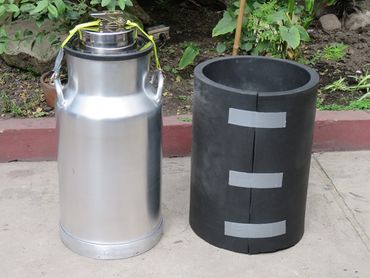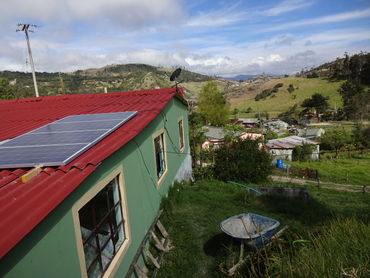Knowledge fuels change - Support energypedia!
For over 10 years, energypedia has been connecting energy experts around the world — helping them share knowledge, learn from each other, and accelerate the global energy transition.
Today, we ask for your support to keep this platform free and accessible to all.
Even a small contribution makes a big difference! If just 10–20% of our 60,000+ monthly visitors donated the equivalent of a cup of coffee — €5 — Energypedia would be fully funded for a whole year.
Is the knowledge you’ve gained through Energypedia this year worth €5 or more?
Your donation keeps the platform running, helps us create new knowledge products, and contributes directly to achieving SDG 7.
Thank you for your support, your donation, big or small, truly matters!
Hohenheim Milk Cooling System - Implementation in Colombia
Introduction
Milk losses due to a lack of cooling and poor hygiene result in high production losses and sanitary risks in Colombia. Hardest hit are small-scale dairy farmers located in non-electrified areas or post-conflict regions.
On the other hand, due to the cost reduction of solar energy, several technical solutions are nowadays available. However, beyond the technology, there is still very little insight into the most promising business models to support small-scale dairy farms in the Colombian context.
For this project, suitable business models will be identified and piloted in a joint initiative between promising local experts, the University of Hohenheim, the GIZ in Colombia, and communities of Meta and other regions in Colombia. The private sector shall be involved at that stage as far as possible to achieve the overall objective of building a bridge towards the deployment of solar milk cooling technologies in (rural) Colombia.
Objectives
October 2017 to May 2018:
Assessment of business opportunities through the introduction of solar milk cooling in rural Colombia
The overall goal of the presented project is to identify, assess and promote business models that would contribute towards an up-scaling of the ice-based milk cooling concept in Colombia.
The project shall focus on the financial and economic assessment of business opportunities as main indicator for future interventions, as further development of the technology, its promotion and cooperation with companies for its local production and commercialization. The objectives include:
- The financial and economic estimation of income generation potential of local milk producers in the Colombian department of Meta, Cundinamarca and Boyacá.
- To identify and formulate suitable business models within existing value chain segments and relevant actors.
- Pilot testing of 3 mobile prototypes with the selected business models at several farms for the assessment of milk quality preservation, income generation and social acceptance.
- The elaboration of strategies to promote and introduce small-scale milk cooling systems at different levels of the dairy value chain (farm, collecting points, cooperative, dairy plants) to give recommendations on how and where to effectively introduce the technology.
- The analysis of the state of the art of local industry for a sustainable commercialization and maintenance of the studied milk cooling solution.
More information






















